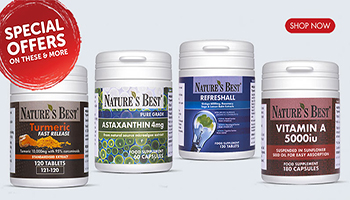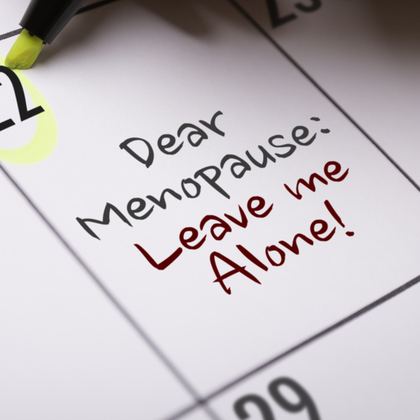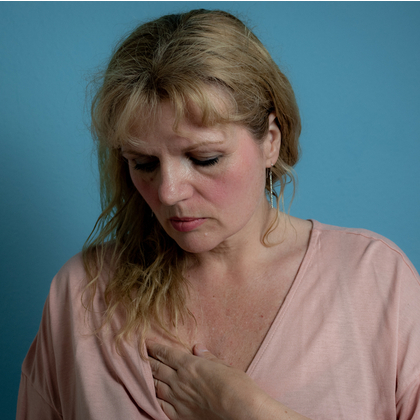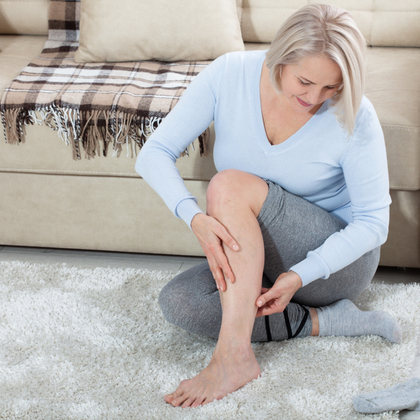
It’s not uncommon to experience joint pain with age, but research suggests that menopausal women are disproportionately affected (1). Around the time of menopause, more than half of women report varying degrees of joint pain, peaking between the ages of 45 and 55 (2).
There are many possible explanations for why this might be: hormones, of course, play a part, but so too do other factors at this stage of your life, including weight gain, stress, and dehydration. Here, we explore the link between the menopause and joint pain.
Can menopause cause aching joints?
You may first experience joint pain in perimenopause — the transitional years leading up to menopause, and this can be down to a variety of reasons (3).
Hormonal fluctuations
Though the exact cause of perimenopausal joint pain is inconclusive, experts believe that fluctuating hormones — particularly, falling oestrogen — may play a role in joint pain (4).
 One theory is that oestrogen helps to regulate fluid levels in the body. Therefore, if circulating amounts of oestrogen are low, the body is unable to hold as much water, which can affect the lubrication of joint tissues.
One theory is that oestrogen helps to regulate fluid levels in the body. Therefore, if circulating amounts of oestrogen are low, the body is unable to hold as much water, which can affect the lubrication of joint tissues.
You reach menopause when you haven’t menstruated for 12 consecutive months. At this point, oestrogen stops oscillating and drops suddenly. Due to this sharp dip, you may continue to experience joint pain post menopause.
That said, it can be challenging to determine if the drop in oestrogen is always responsible for postmenopausal joint pain since this period also coincides with increasing cases of age-related osteoarthritis (5).
Dehydration
Dehydration due to excessive sweating or not drinking enough water can exacerbate the effects of low oestrogen in the body, which may lead to further joint pain. Dehydration can also make it harder for the kidney to excrete excess uric acid, often rendering joints sore and inflamed.
If you experience night sweats, you may find your joints are particularly stiff in the morning because of dehydration.
Stress
Stress can take a huge physical toll on the body. Long-term stress and anxiety — which can be common in perimenopause — are known to release high concentrations of the stress hormone, cortisol, and lead to inflammation, which may cause joints to swell and feel tender (5).
Weight gain
Weight gain is also typical in menopause. Declining levels of oestrogen can make it easier for some women to gain weight. And excess weight puts additional pressure on joints, especially the hips and knees.
How to ease menopause joint pain
Thankfully, there are some simple lifestyle changes you can make which may help you reduce painful joints during menopause.
Exercise regularly
Not only does physical activity strengthen muscles and aid mobility, but it can also help you maintain a healthy weight, alleviating any extra pressure on joints.
To safeguard joints, consider incorporating a range of non-weight-bearing exercise (swimming, cycling), low-impact, weight-bearing exercise (dancing, walking), and low-impact non-weight-bearing exercise (yoga, Pilates) into your routine.
Be mindful that high-impact activity, like road running, may intensify joint pain. Always take care to warm-up and cool down after working out, too.
Manage stress
Make a conscious effort to look after your emotional health. This can take the form of establishing healthy boundaries at home and at work; carving out time for mindfulness; or making time for activities you enjoy.
Drink plenty of water
Since dehydration can have such an effect on joints, staying hydrated is crucial. Aim for 1.5-2 litres of plain water daily. Besides this, try to limit your intake of coffee and tea; caffeine is a diuretic, meaning it makes your body lose water. Try replacing caffeinated drinks with herbal teas.
If your joints are particularly sore in the morning, have a small glass of water an hour before bed — this is vital if you experience night sweats.
What can I take for menopause joint pain?
You might also want to try these herbal remedies to help ease painful joints:
Devils’ Claw
This traditional herbal remedy is used for the relief of backache, rheumatic or muscular pain, and general aches and pains in muscles and joints.
Omega 3s
Oily fish such as mackerel, herring, sardines and salmon are good source of omega 3. However, if you don't eat oily fish regularly, or don’t like the taste of fish, you might want to consider taking a fish oil supplement. If you follow a plant-based diet there are vegan omega 3 options available.
PEA
PEA is an endocannabinoid-like compound found in almost every cell, tissue, and fluid. Naturally produced when cells are damaged or threatened, PEA is a well-researched alternative to CBD and often recommended to manage physical discomfort.
Does HRT stop joint pain?
Some doctors may prescribe hormone replacement therapy (HRT) to manage menopausal joint pain. While data suggests HRT can help to mitigate some symptoms of musculoskeletal pain, it remains unclear if these effects are long-lasting (6). Your doctor will be able to best advise you on what is the best option for you.
If you would like more information on the symptoms of menopause, along with techniques to manage them, browse the resources on our Menopause hub.
References:
-
Watt F. Musculoskeletal pain and menopause. Post Reproductive Health. 2018;24(1):34-43.
-
Cicuttini. SC, Guthrie. J, Dennerstein L. The relationship of reports of aches and joint pains to the menopausal transition: a longitudinal study. Climacteric. 2008;11(1):55-62.
Prieto-Alhambra D. et al., Incidence and risk factors for clinically diagnosed knee, hip and hand osteoarthritis: influences of age, gender and osteoarthritis affecting other joints. Annals of the Rheumatic Diseases. 2013;73(9):1659-1664.
-
nhs.uk (2020). Menopause. Available online: https://www.nhs.uk/conditions/menopause/symptoms/
-
Watt F. Musculoskeletal pain and menopause. Post Reproductive Health. 2018;24(1):34-43.
-
Magliano M. Menopausal arthralgia: Fact or fiction. Maturitas. 2010;67(1):29-33.
-
Hassett. A.L., Clauw D.J., The role of stress in rheumatic diseases. Arthritis research & therapy. 2010;12(3):123.
-
Vainionpaa A. et al., Effect of impact exercise and its intensity on bone geometry at weight-bearing tibia and femur. Bone. 2007 ;40(3):604-611.
-
Magliano M. Menopausal arthralgia Maturitas. 2010;29-33.
Disclaimer: The information presented by Nature's Best is for informational purposes only. It is based on scientific studies (human, animal, or in vitro), clinical experience, or traditional usage as cited in each article. The results reported may not necessarily occur in all individuals. Self-treatment is not recommended for life-threatening conditions that require medical treatment under a doctor's care. For many of the conditions discussed, treatment with prescription or over the counter medication is also available. Consult your doctor, practitioner, and/or pharmacist for any health problem and before using any supplements or before making any changes in prescribed medications.
Related Posts

Olivia
Olivia Salter has always been an avid health nut. After graduating from the University of Bristol, she began working for a nutritional consultancy where she discovered her passion for all things wellness-related. There, she executed much of the company’s content marketing strategy and found her niche in health writing, publishing articles in Women’s Health, Mind Body Green, Thrive and Psychologies.
View More



